Learn how to do a pull-up to build upper body muscle
Master how to do a pull-up with step-by-step instructions and proper techniques from a qualified personal trainer
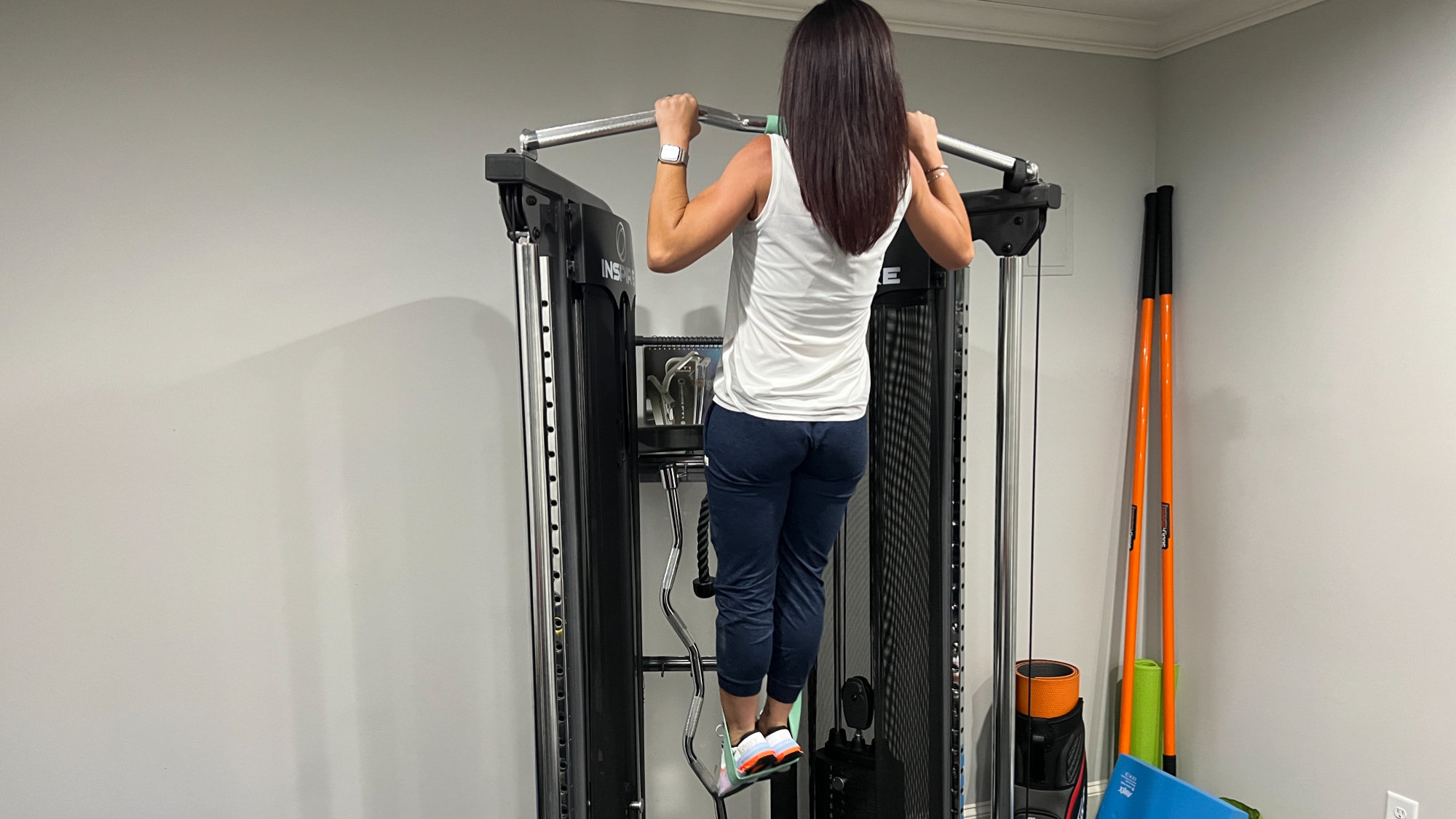

Ready to learn how to do a pull-up and take your upper body strength to new heights? Our beginner-friendly guide to pull-ups is here to help you conquer this fundamental exercise and achieve impressive results.
Pull-ups may look relatively straightforward, but adjusting your body into the correct form can be a more challenging task than picking up some adjustable dumbbells and doing biceps curls.
To help you get started, we spoke to NASM-certified personal trainer Wendy Batts and asked her how to do a pull-up, beginner-friendly variations, the benefits you get from pull-ups, and how to train for them.

Wendy Batts is a regional master instructor for the National Academy of Sports Medicine (NASM) and an assistant professor for the exercise science programs at Pennsylvania Western University (PennWest). Wendy holds a Master's degree in Exercise Science and Health Promotion and is a licensed massage therapist specializing in neuromuscular therapy.
How to do a pull-up
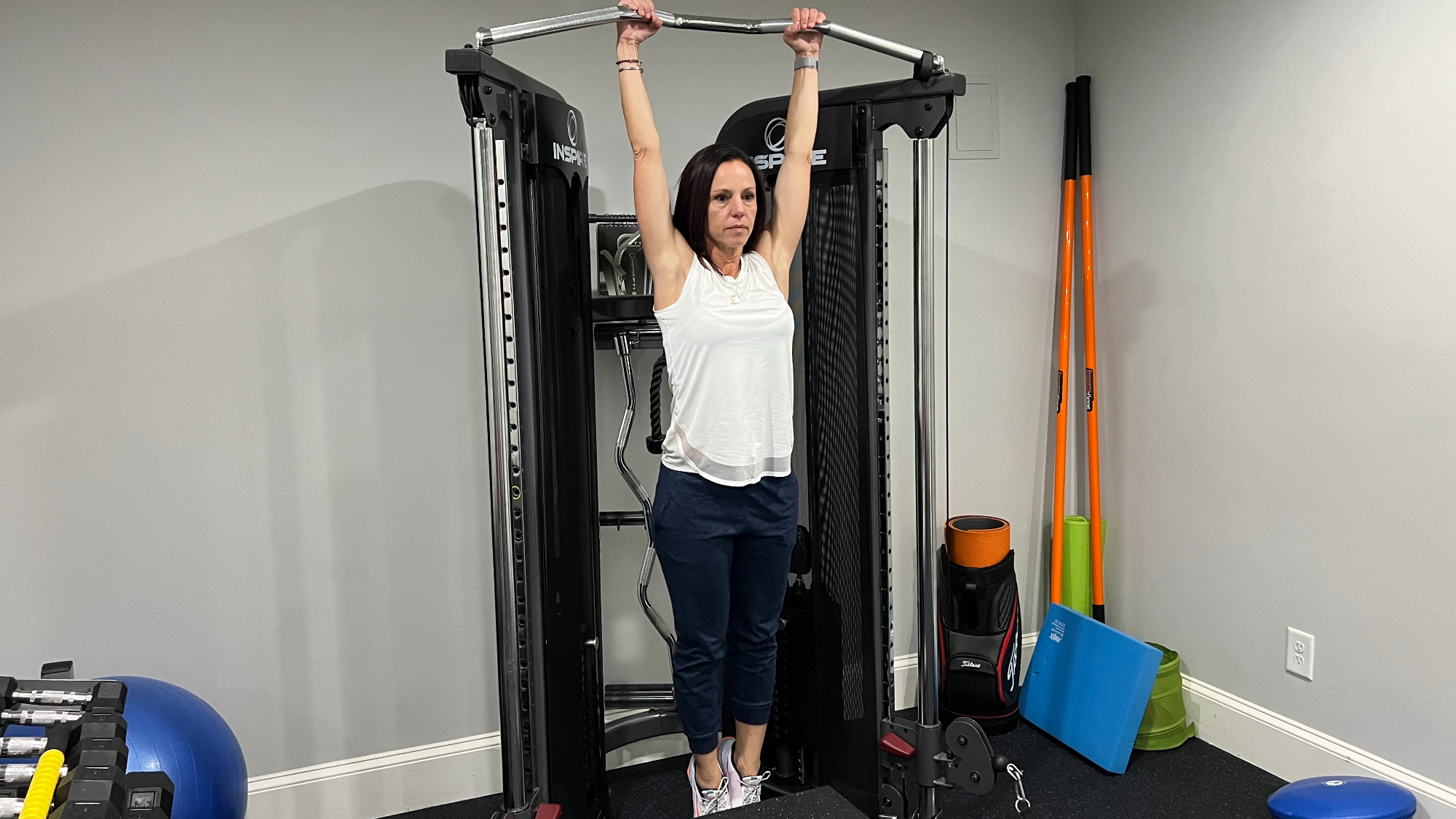
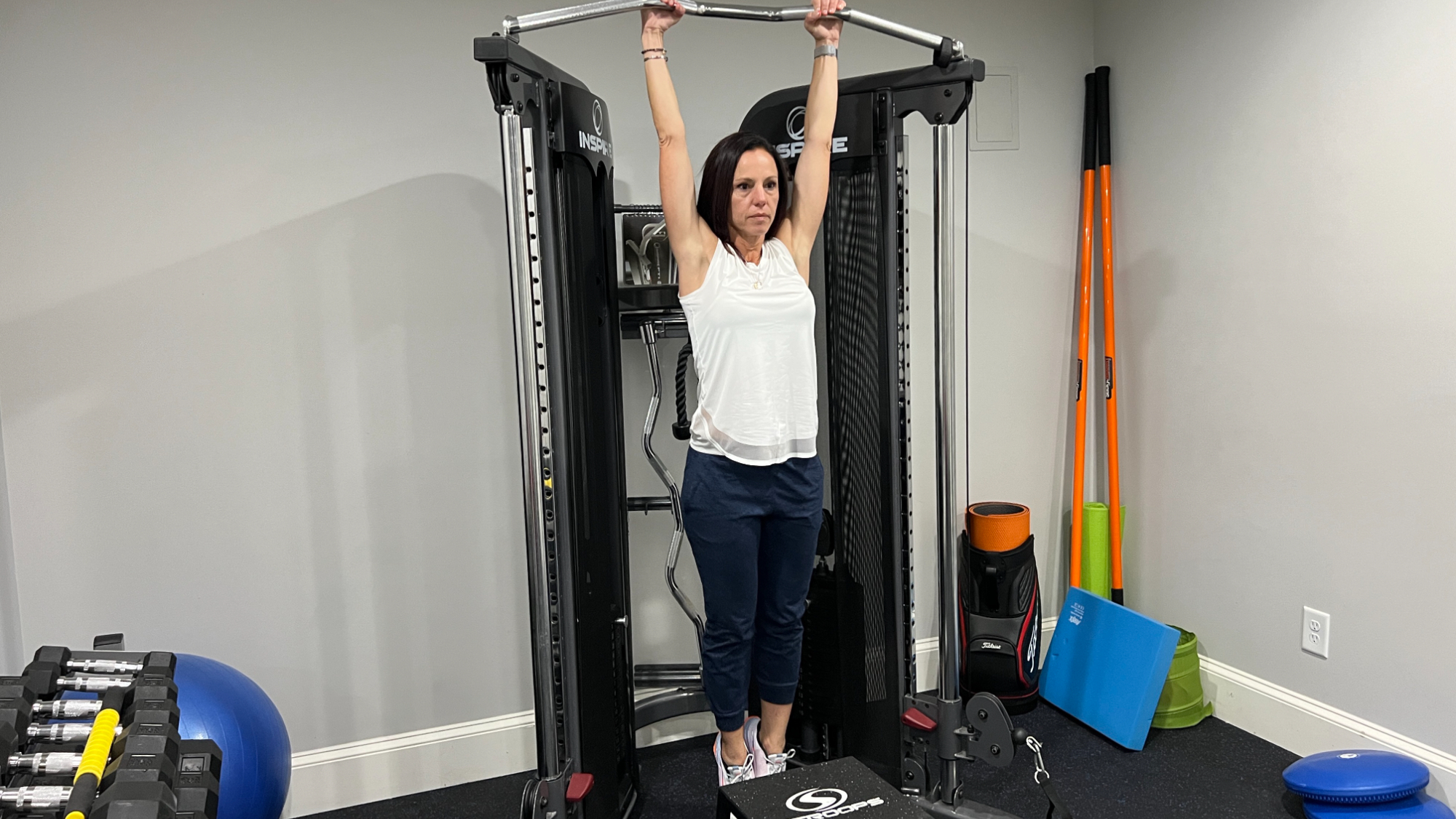
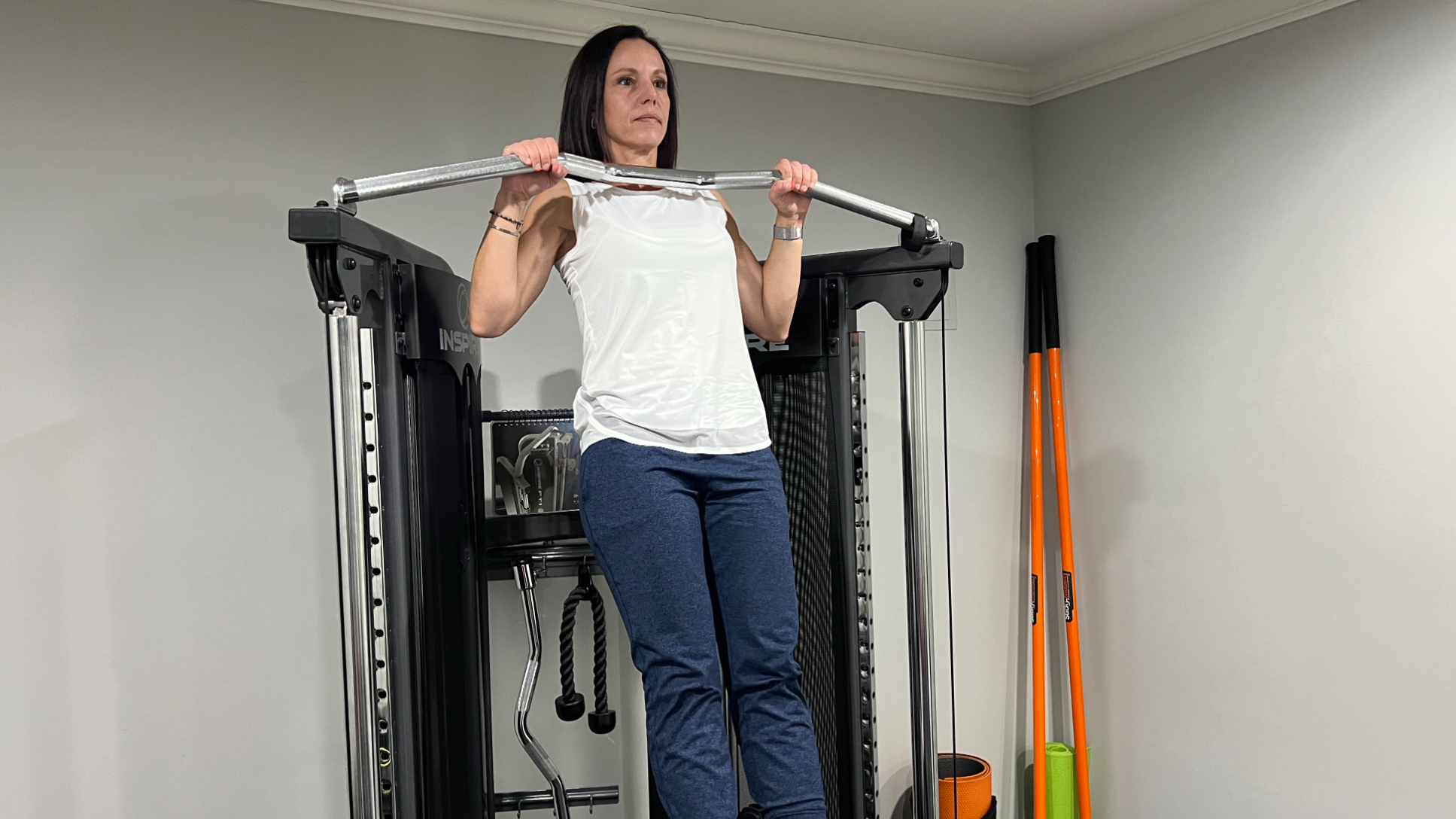
Despite its initial difficulty, learning how to do a pull-up is well worth the effort, as it targets multiple muscle groups, develops functional strength to help with everyday activities, and builds the mind-muscle connection.
Batt agrees that the pull-up can be a challenging move, but that the core movement is relatively straightforward, made more effective with a few adjustments to your form.
- Grasp the pull-up bar or handles with both hands slightly more than shoulder-width apart and palms facing away from you.
- Place your weight on the bar and lift your feet off of the ground into a 'dead hang' position, with your toes pointing down and straight legs.
- Engage your core by tensing the muscles around your stomach and pulling your belly buttons toward your spine.
- Pull your shoulders away from your ears and pull down on the bar to raise your upper body, driving your elbows down to your hips.
- Pause for a few moments once the top of your chest is in line with the bar, then lower slowly back to the starting position. That's one repetition.
Batts suggests that you should feel as though you're pulling the bar towards your body, rather than the other way around. This will help distribute the weight through your whole hand on the bar.
Over time, you can adopt a narrower grip if you want to make the exercise more challenging or widen it if you want to reduce the intensity.
Get the Fit&Well Newsletter
Start your week with achievable workout ideas, health tips and wellbeing advice in your inbox.
How to do a pull-up for beginners
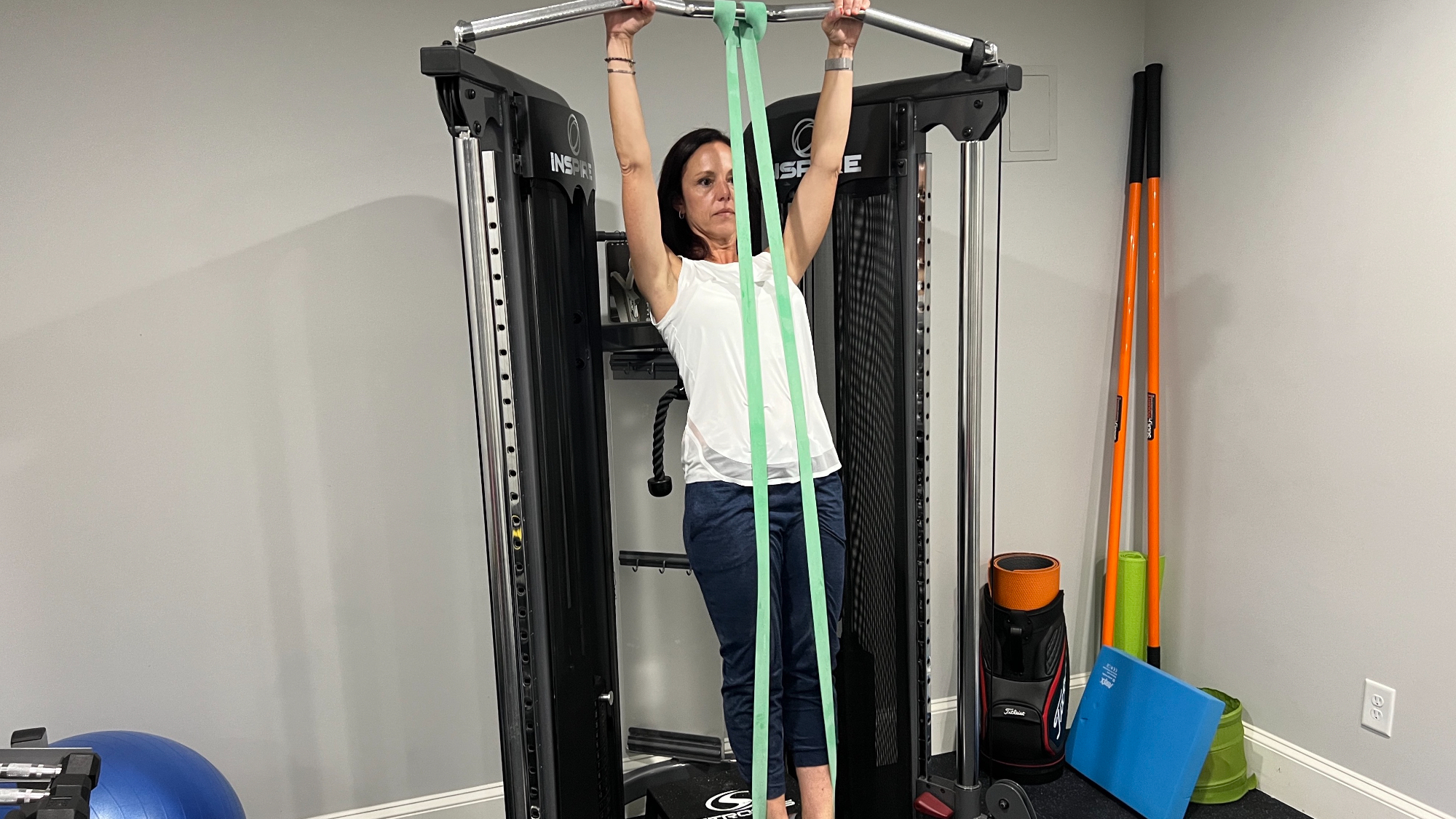
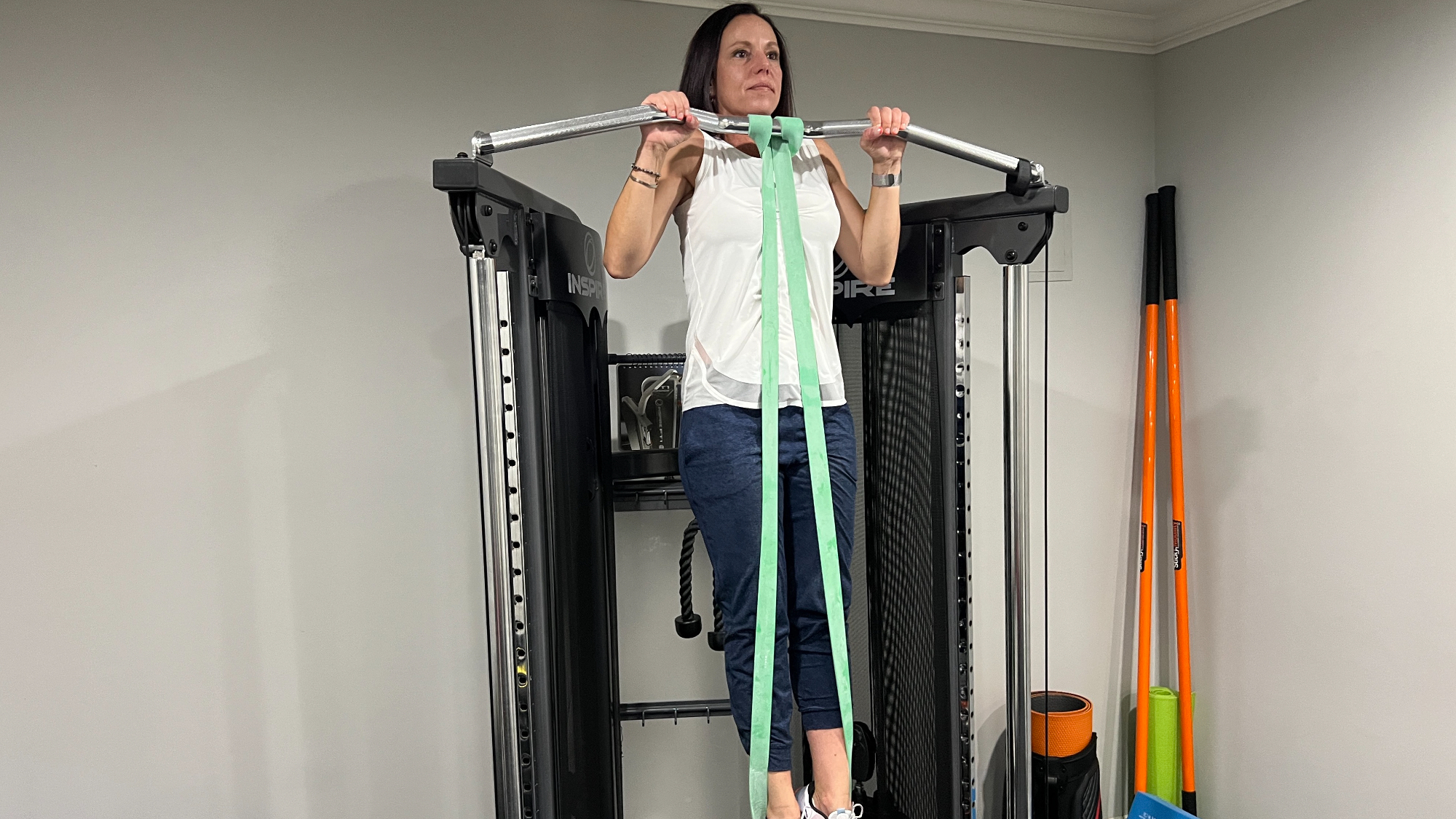
If you're finding that the standard pull-up is too difficult, there are adjustments you can make to work your way up to it without affecting your form.
Batts suggests that the top pull-up variation for beginners is to use a resistance band to assist in the movement. These budget-friendly bands often come in sets of the best resistance bands and are ideal for modifications like this or as a portable alternative to weights.
Start with a band that provides enough assistance to complete 8-10 repetitions with proper form. As you progress, you can gradually reduce the band's assistance until you can perform unassisted pull-ups.
- Attach the long looped band to the pull-up bar or handles, and step onto the section of the band closest to the ground.
- Grab the pull-up bar with an overhand grip, palms facing away, slightly wider than shoulder-width apart.
- Place your weight on the bar, lift your feet off the ground, and adopt a dead hang position.
- Begin the pull-up, raising the top of your chest in line with the bar.
- As you pull up, the band will offer some support so that you don't have to lift your entire body weight.
- Hold at the top for a few moments before gradually lowering back to the dead hang position. That's one repetition.
What muscles do pull-ups work?
Pull-ups are a great example of a compound exercise — a move that works several muscles simultaneously. This bodyweight exercise engages your whole upper body, including your shoulders, chest, and arms.
So, you'll train your latissimus dorsi (the 'lats' muscles in your lower back), Pectoralis major (chest muscle), and shoulder muscles, including your rhomboids, posterior deltoid, and trapezius.
Meanwhile, you get the benefits of several core strengthening exercises as you engage your obliques, rectus abdominis, transverse abdominis, and spinal erectors (back muscles that run along the spine) to stabilize and support your torso.
However, to strengthen all these muscles, you need to focus on how to do a pull-up and perfect your technique. Batts explains that "done effectively and with ideal form, pull-ups strengthen muscles that can enhance upper body posture and alignment."
What are the benefits of pull-ups?
Embracing the pull-up exercise unlocks a world of benefits for your overall fitness. When executed correctly, pull-ups become a total body workout and play a crucial role in strengthening the often-neglected middle and upper back muscles, countering imbalances caused by lifestyle and activity habits.
By addressing these imbalances, pull-ups contribute to improved posture, reduced discomfort, and decreased risk of injury. Beyond upper body muscle development, Batts tells us that pull-ups offer remarkable advantages, including increased relative strength.
"Relative strength is how much force you can produce relative to your body weight and reflects how effectively and efficiently you can functionally move and control your body."
This relative strength plays a crucial role in how our bodies adapt as we age, helping us stay mobile and active later in life. Plus, pull-ups increase grip strength, a vital health marker.
Studies, including one published in the Clinical Interventions in Aging journal, have demonstrated that weaker grip strength is associated with negative health outcomes, including increased mortality risk.
Conversely, greater grip strength correlates with better overall health and longevity. The findings suggest that stronger grip strength often results from an active lifestyle that includes engaging in exercises like pull-ups as part of a strength training routine.
Which exercises can prepare you for a pull-up?
While it looks like a straightforward exercise, pull-ups require strength, mobility, and core muscle. That's why some people train for two months before taking on a pull-up.
If you want to give yourself the best chances of success, Batts recommends training several areas of your body before you make pull-ups a regular part of your workout.
To boost your flexibility and mobility:
- T-Spine foam roll
- Pec stretch
- Lat stretch
To strengthen your core:
- Dead bugs
- Hollow-body holds
- Stability ball roll-outs
To build muscle in your upper and lower body:
- Kettlebell carries
- Straight-arm pull-downs
- Lat pull-downs
- Dumbbell rows
- Inverted rows
- Seated pull-ups
- Band-assisted pull-ups
- Top hold
- Dead hang
- Negative pull-ups
Incorporating these exercises into your workout routine will help you build the necessary flexibility, core stability, and upper body strength to progress toward achieving your first pull-up.
Keep in mind that everyone has to start somewhere, and you don't need to immediately aim for the toughest or most intense options. Instead, you can use the progressive overload technique to gradually increase the resistance as you get stronger.
Jessica is an experienced fitness writer with a passion for running. Her career in journalism began in local news and she holds a Masters in journalism. Jessica has previously written for Runners World, penning news and features on fitness, sportswear and nutrition.
When she isn't writing up news and features for Fit&Well covering topics ranging from muscle building, to yoga, to female health and so on, she will be outdoors somewhere, testing out the latest fitness equipment and accessories to help others find top products for their own fitness journeys. Her testing pairs up nicely with her love for running. She recently branched out to running 10Ks and is trying to improve her time before moving on to larger races. Jessica also enjoys building on her strength in the gym and is a believer in health and wellness beginning in the kitchen. She shares all of this on her running Instagram account @jessrunshere which she uses for accountability and for connecting with like-minded fitness lovers.